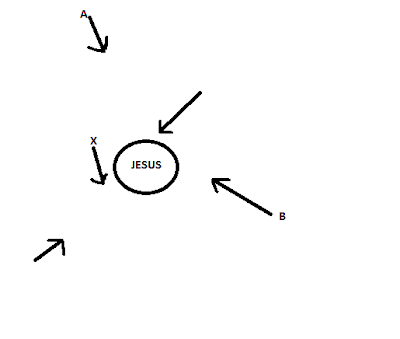"Unknown Caller" from No Line on the Horizon
Sunshine, sunshine
Sunshine, sunshine
(song starts with birds singing, gives the impression of early morning-
dawn, a fresh start, new creation?)
Oh, oh
I was lost between the midnight and the dawning
(sleeping during the night...)
(that half-conscious dream state, not really sure where you are, etc)
(3:33 is a common U2 reference to Jerimiah 33:3,
"call on me and i will answer you, and tell you great and unsearchable
things you do not know". See the cover of ATYCLB, the airport terminal
marquee has the J 333 lit up. In numerous interviews Bono referred to this as
"God's calling card". )
(The repeated attempts of the Spirit to get his attention?)
( 'Shout it out' , a refrain from the Psalter, is another frequent reference
in U2's corpus. See for example “With a Shout” from October (1981) )
Escape yourself, and gravity
Hear me, cease to speak that I may speak
(the 'I' is certainly God, telling Bono to shut up, to listen, instead of
babbling on...)
Oh, oh
Force quit and move to trash
(Brilliant imagery- in Mac speak, 'force quit' is what you have to do when the
OS or program locks up...similar to windows CRTL+ALT+DEL but much more poetic.
In this case, it’s the writers life course, the current path, or direction,
that they must confront and alter...)
(in other words, things were bad, but had the potential of getting worse...)
(time of uncertainty, questioning.... fear? )
And I sat there waiting for me
(the writer could see where his life direction was heading -to an
'accident'. He could see that the results of the decisions he was making would
not be good. It is a futuristic vision, as he was 'waiting for me'...)
You're free to go
(HOWEVER GOD is offering the chance to avoid the accident, to change the
path one's on, to 'alter the future as it were...)
Shout for joy if you get the chance
Password, you, enter here, right now
(After the choice is made to change [force quit/move to trash has been done
- REPENTANCE ] now the fresh start, reboot )
You know your name so punch it in
(the login, with the "password, YOU > enter here..right now"
not a request, more like a command from God- )
Shush now
Oh, oh
Then don't move or say a thing
(again, the command to 'be still , and know that i am God..." )
This is an amazing picture of repentance and renewal. The song begins with an instrumental that builds the impression of dawn- birds signing, and starts the theme of fresh starts, renewal, creation. In the early morning hours, the character in the story gets a call from the "unknown caller" > God. Unknown perhaps because he had been ignoring previous calls....not wanting to answer...what is the "unknown" that comes up on caller ID? Usually someone you don't want to talk to- ex. a bill collector, or a salesperson.
Regardless, here is a picture of how we can get stuck when we know we SHOULD be turning to God for comfort or repentance, but we choose not to.
3:33, a play on words, the reference to Jeremiah 33:3 "Call on me and I will answer you..." . The Spirit tells me to 'shush now' - not to talk or complain to God, but to be quiet, and listen for a change.
“Driven to the scene of an accident waiting for me”, the character (Bono, you, me..) can "see" or knows what the current trajectory of his life will lead to- an "accident". We often know, as the Spirit convicts us of sin and the need for repentance, that how we are living our life at the moment isn't working, and the end result if we continue in this trajectory will be very, very, bad. Nonetheless, if often takes something significant for us to be willing to see this, and then change our direction.
The offer, or command, from God, is freedom- grace, the ability to leave our failing and hopelessly broken program ("force quit, and move to trash") and start fresh again. ("your free to go")
The result?
Fellowship, God's presence, freedom from guilt and shame, and hearing his voice that drives out confusion, fear and despair.

